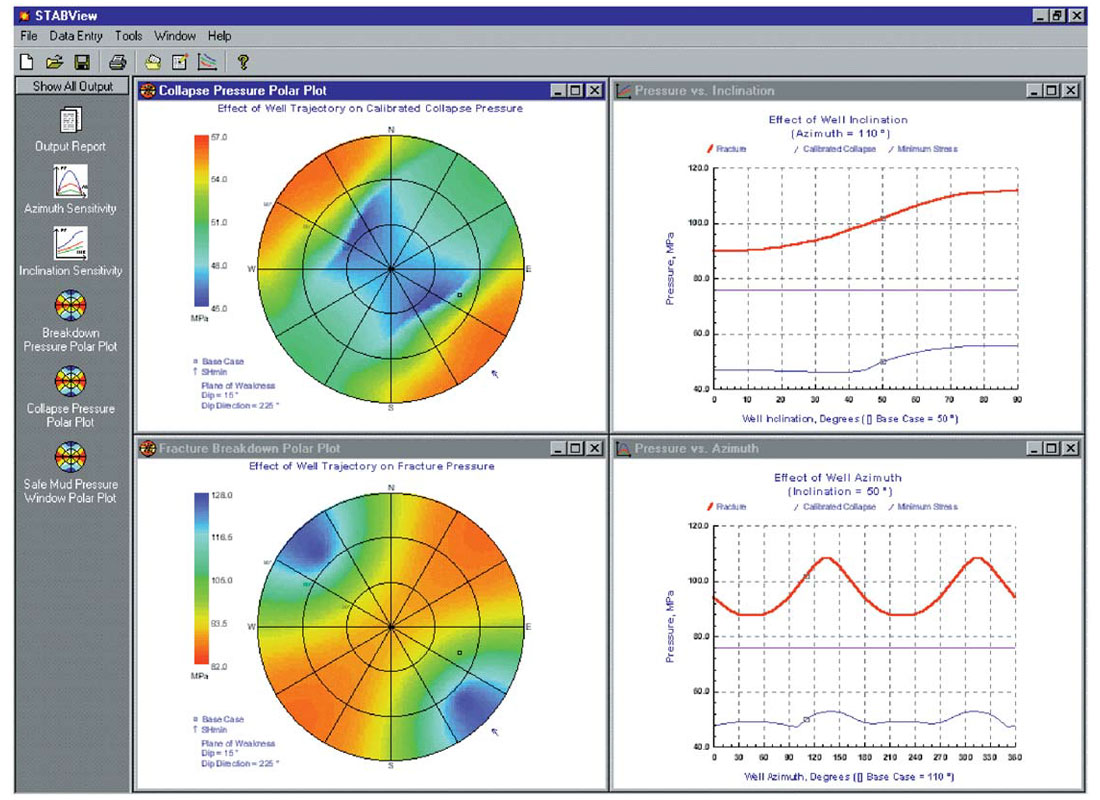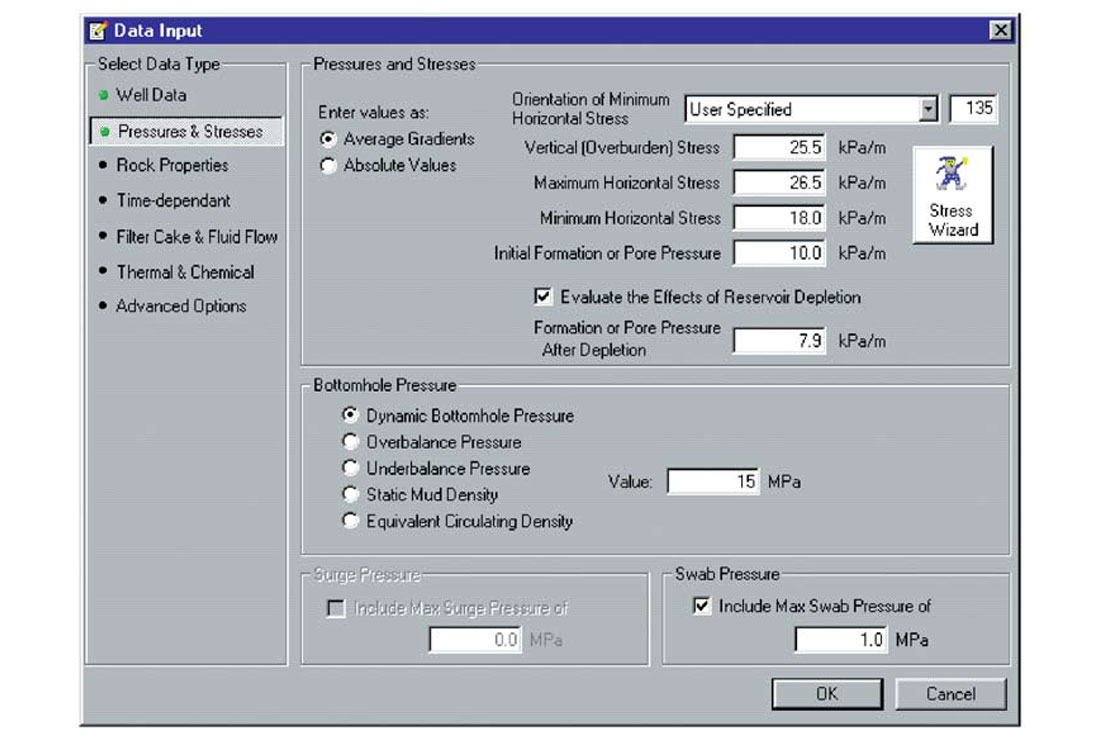Advanced Geotechnology are the developers of STABView™, a Windows-based software package for evaluating borehole stability, lost circulation and sand production risks for vertical, deviated and horizontal wells in a wide variety of geological settings. In many sedimentary basins, especially in tectonically deformed strata or deep offshore settings, and those possessing weak fissile shales and depleted or overpressured formations, the selection of the optimal well trajectory and construction can be a complicated matter.
STABView was developed to help determine the optimal well trajectory, window of operating bottomhole pressure, mud properties and best practices to drill, complete and produce from a given formation. STABView will also help avoid catastrophic hole collapse, reduce lost circulation risks, and prevent some types of well control problems (Figure 1).

Openhole stability under drawdown for horizontal wells in weak sandstones may be analyzed in STABView to help decide if sand control is necessary over the life of the well. Options exist for selecting an instantaneous drawdown pressure that will purposefully collapse a hole to ensure uniform sand packing around liners or screens. STABView also possesses special features for depleted formations, heavy oil reservoirs, high temperature environments, fissile shales, fractured formations, and reactive shales (Figures 2 and 3).

A new feature has been developed in the latest release of STABView to evaluate the most permeable set of natural fractures or faults based on their orientation with respect to the present day in-situ stress regime. Well trajectories in naturally fractured reservoirs can be selected to optimize reservoir drainage, injection conformance, and fracture stimulation treatments. This new capability in the software can also be used to assess fault seal integrity, since active faults more commonly provide a pathway to reservoir fluids.
This presentation will demonstrate some of the unique geo-engineering features of STABView, including several examples of its application to complex well designs. More information on the software and its capabilities may be found at www.advgeotech.com.












Join the Conversation
Interested in starting, or contributing to a conversation about an article or issue of the RECORDER? Join our CSEG LinkedIn Group.
Share This Article